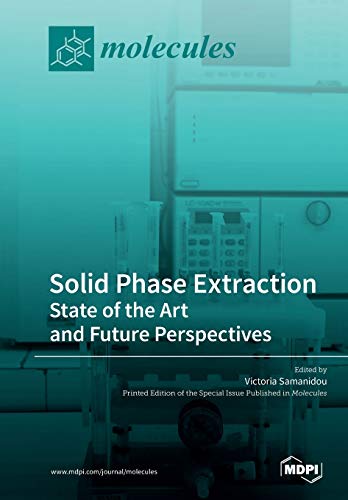

Most ebook files are in PDF format, so you can easily read them using various software such as Foxit Reader or directly on the Google Chrome browser.
Some ebook files are released by publishers in other formats such as .awz, .mobi, .epub, .fb2, etc. You may need to install specific software to read these formats on mobile/PC, such as Calibre.
Please read the tutorial at this link: https://ebookbell.com/faq
We offer FREE conversion to the popular formats you request; however, this may take some time. Therefore, right after payment, please email us, and we will try to provide the service as quickly as possible.
For some exceptional file formats or broken links (if any), please refrain from opening any disputes. Instead, email us first, and we will try to assist within a maximum of 6 hours.
EbookBell Team

4.7
86 reviewsThis book is a collection of 13 innovative papers describing the state of the art and the future perspectives in solid-phase extraction covering several analytical fields prior to the use of gas or liquid chromatographic analysis. New sorptive materials are presented including carbon nanohorn suprastructures on paper support, melamine sponge functionalized with urea–formaldehyde co-oligomers, chiral metal–organic frameworks, UiO-66-based metal–organic frameworks, and fabric phase sorptive media for various applications. Solid-phase extraction can be applied in several formats aside from the conventional cartridges or mini-column approach, e.g., online solid-phase extraction, dispersive solid-phase microextraction, and in-syringe micro-solid-phase extraction can be very helpful for analyte pre-concentration and sample clean-up. Polycyclic musks in aqueous samples, 8-Nitroguanine in DNA by chemical derivatization antibacterial diterpenes from the roots of salvia prattii, perfluoroalkyl substances (PFASs) in aater samples by bamboo charcoal-based SPE, parabens in environmental water samples, benzotriazoles as environmental pollutants, organochlorine pesticide residues in various fruit juices and water samples and synthetic peptide purification are among the applications cited in this collection. All these outstanding contributions highlight the necessity of this analytical step, present the advantages and disadvantages of each method and focus on the green analytical chemistry guidelines that have to be fulfilled in current analytical practices.